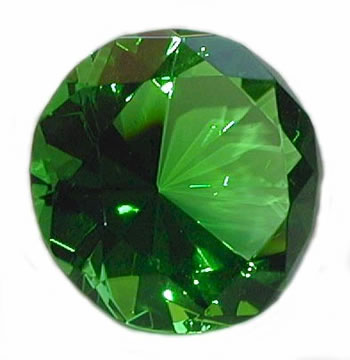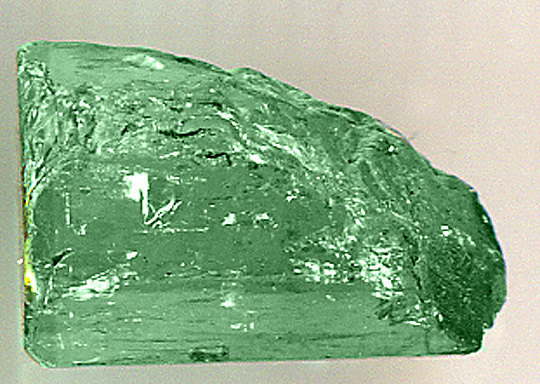May Birthstone
Emeralds

Mohs scale hardness: 7.5-8
Emeralds are one of the most beloved of gems, with a colorful and long history, earning it the rank of “precious” stone, along with diamond, ruby and sapphire. Emeralds belong to the beryl mineral family and the only gemstone besides topaz that is listed as in all of the ancient birthstone table. Emerald is the most valuable type of beryl and It is one of the most favored green gemstone. The gem is the traditional gift for the 55th wedding anniversary, it is also used as a 20th and 35th wedding anniversary stone. True pure beryl has no color, traces of chromium and vanadium give emerald its green color. Other beryl minerals include pale blue aquamarine, pink morganite, golden helidor and pale green beryl. Technically, light green beryl material cannot carry the title emerald, the color of true emeralds have been described as the rich, translucent green of new grass glistening after a rain.
Emerald Cut
Emeralds are considered one of the most difficult gemstones to cut. While they are extremely hard, harder than steel, they are also brittle and can easily crack or chip if not handled properly. Emeralds are also riddled with inclusions or microscopic impurities. It takes an expert eye to determine how the rough emeralds should be oriented to maximize the beauty of their final appearance. They are most often fashioned in a rectangular step-cut, which suits the natural shape of the emerald crystal. This style is now known as the “emerald cut”. Rather than bring out the sparkle of a stone, as in the case of the round “brilliant cut,” focuses on the depth of the crystal, allowing you to appreciate the gem’s color.
Emerald Characteristics and Treatments
Emeralds are also strong enough to withstand heat and they do not change color easily. Emeralds characteristically have many tiny fissures and fractures as well as inclusions in their crystals. To improve the appearance of heavily-included gems, and to prevent them from cracking further, the practice of oiling emeralds developed. All sorts of oils are used, from mineral oil to special secret formulas created over several generations. They should never be immersed in an ultrasonic (this process can remove coating) or subjected to steam cleaning. A complete flawless of emerald has never yet been found! These inclusions can act like a fingerprint, giving each emerald a distinct personality. Another effective method used to get rid of certain flaws in emerald gems is by irradiation. Emerald is found in mica schists between pegmatites or granitic rocks. Sometimes alluvial and eluvial deposits also hold this gem. During the crystallization process, some geological disturbances always takes place, that is why all emeralds are found with inclusions such as cracks, bubbles, carbon fleck or foreign crystals inside.
In India, emeralds were also considered antidotes to poison. The restfulness of the emerald hue was believed to have restorative power for eyesight. To further boost magical properties, words from holy scriptures were sometimes carved onto the face of large emerald crystals.
It is believed Emeralds have special properties:
- Brings luck and success.
- Increase wearer's ability in speech and diplomacy.
- Enlarge the power of the wearer.
- To give warning to the wearer of incoming dangers, usually the color becomes pale.
- To enhance the clairvoyance of their wearers.
- Reject evil thoughts in order to stay clean especially females, and if the gem you wear suddenly falls down then this will be a bad omen.
Always do your purchase of true emerald from a reliable dealers as the market is flooded with imitations, simulators and synthetic gems. Sometimes clever dealers like to take two pale green colored stones and join them with bright green glue and irradiate with green dye. These nothing but fake stones are sold with high price under the misleading names such as Chatham Emerald, Biron Emerald, Kimberly Emerald, Gilson Emerald, Lennix Emerald, Regency Emerald, Linde Emerald, Zerfass Emerald etc. Other precious stones that often been used to mimic emerald and sold at the price of genuine emerald are peridot, tourmaline, chrome diopside, zircon, hiddenite and green garnet.
Asian origin: India.
Astrologically, emerald is associated with the zodiac signs of Taurus and Cancer.
May birth flower: Lily of the Valley.
Copyright © 2009 Game Frog
Home | Contact | Disclaimer | Privacy Policy